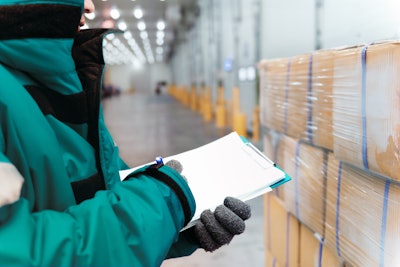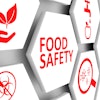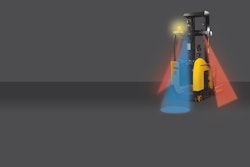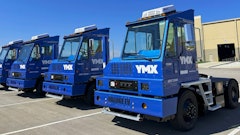
Today’s supply chains are under increasing pressure to improve efficiencies in light of the Coronavirus disease (COVID-19) vaccine rollout. Distributing COVID-19 vaccines worldwide is an unprecedented logistical challenge, putting an immense strain on the pharmaceutical cold chain. As of March 23, 157 million doses have been distributed, while only 127 million doses have been administered, according to CDC data.
This disparity raises concerns regarding the safety and quality of the vaccine doses, as 20% of temperature-sensitive products are damaged during transport due to broken cold chains, while 30% of scrapped pharmaceuticals are attributed to logistics issues alone. Since at least 5.6 billion people need a COVID-19 vaccine worldwide, a 20% vaccine loss due to cold chain issues is unacceptable.
To address these growing concerns, pharmaceutical companies need to deploy end-to-end tracking processes and capabilities in their cold chain operations, which will enable them to maintain product quality from the time of manufacture to the point of delivery to the end consumer.
By implementing supply chain visibility and track-and-track technologies, pharmaceutical companies can gain deeper insight into the condition of their vaccine shipments. This is accomplished via real-time data at the unit level (i.e. product, temperature and location of each vial), which increases the safety and quality of these vaccines. Armed with these real-time insights, these companies can also avoid hefty costs associated with investigating the root cause of temperature excursions, ranging from $3,000-$10,000 for each excursion.
The particular challenges of cold chain products
Cold chain pharmaceutical products face a range of possible issues as they progress through the supply chain before reaching the end consumer. The No. 1 challenge of any cold chain product is to ensure that it is stored and transported within the required temperature ranges at all times. If a product veers out of the range by even just one degree, product quality could not only be compromised, but be extremely expensive to replace and re-send. In fact, the biopharma industry loses $34 billion each year because of temperature-control failures across their supply chain, according to the IQVIA Institute for Human Data Science.
Pharmaceutical companies transporting COVID-19 vaccines across the country have already run into these issues. On Jan. 17, close to 12,000 Moderna vaccine doses were spoiled because they arrived too cold.
Solve cold chain challenges by increasing supply chain visibility
Pharmaceutical supply chain organizations must meet the following seven requirements to ensure successful distribution of cold chain products such as COVID-19 vaccines:
- Proper product storage and packaging insulation to avoid temperature excursions.
- Seamless cold chain transit, based on automated alerts and continuous data streams to ensure accurate data and real-time reporting.
- Accurate transit information for products, including real-time location, arrival time and any temperature excursion data.
- Reliable temperature-controlled storage solutions during in-transit and at the point of care.
- The ability to respond to unexpected events such as severe weather.
- Detailed, real-time streams of documentation, so that shipping and logistics partners can collaborate smoothly.
- Pharmaceutical shipment records are often incomplete, as links between shipments, orders and serial numbers can be missing; full regulatory compliance is needed by providing real-time audit records and quality certificates for regulatory authorities.
- Artificial intelligence (AI) and machine learning (ML) models can be used to identify anomalies and find exceptions, providing pharmaceutical companies with continuous intelligence from the billions of data points collected throughout the supply chain.
To accomplish all seven steps, pharmaceutical companies need to directly address the lack of visibility into their cold chain. Since a vaccine’s cold chain begins with the cold storage unit at the manufacturing plant and ends at vaccine administration, every single step of handling and storage must be carefully temperature controlled. Often, temperatures may fluctuate inside a trailer resulting in damage to the vaccines. Temperature excursions can also occur is when vaccines are loaded and unloaded onto transport. Generally, the real-time location of COVID-19 vaccines is known but lacks real-time product condition tracking data at the pallet level while in-transit, meaning thousands of vaccines can be spoiled.
Successful cold chain companies require real-time data access to their goods, both in the warehouse and in transit. Since temperature, humidity, light and vibration excursions can occur anywhere, these cold chain companies would greatly benefit from end-to-end visibility into their supply chain. This can be accomplished through sensors that can monitor product conditions, movement and transaction handoffs in real time, creating visibility and providing insights that can significantly reduce temperature excursions and other key cold chain challenges.
By increasing supply chain visibility through the Internet of Things (IoT), analytics, AI, ML and cloud computing, pharmaceutical companies can benefit from incorporating increased intelligence into every step of the cold chain. By capturing real-time data about the condition, timing and location of their vaccines and other products, pharmaceutical companies can mitigate issues before they cause significant loss, while distributing the COVID-19 vaccine to worldwide populations quickly and safely.



















